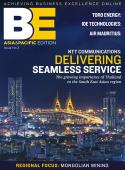Productivity in security┬áU.S. Security Associates has over 28,000 employees nationwide after just 16 years in business. April Terreri discovers how the company secured this level of success so quickly and what it is doing to change the landscape of the security industry. Handing over your entire security operation to a contract security service company requires a high level of trust in that companyÔÇÖs ability to offer effective personnel and services. U.S. Security Associates understands that this degree of trust deserves fail-safe security, and this is what it provides to its 2,800 clients nationwide. The company was the first uniformed security company to be certified ISO 9001:2000, nationwide, at all its offices and has also received certification from the Department of Homeland Security.U.S. Security Associates deploys innovative programs for its employees and operational programs for its clients, each developed to enrich the security experience. These programs could not have been designed without the breadth and depth of knowledge provided by the founders of the company, each with 15 years of prior security experience at the largest national security company. ÔÇ£We knew there were opportunities to build more information technology into the security business, which was a mature industry having few operational control systems back then,ÔÇØ says Chuck Schneider, president and CEO of the Roswell, Georgia-based company. He and his partner, Ken Oringer, executive vice president, founded the company in 1993.ÔÇ£We believed that introducing more information technology could help to control a large decentralized business,ÔÇØ Schneider says. Today the company operates over 125 offices throughout the country, employing more than 28,000 people to serve more than 3,000 clients. ÔÇ£The concept we had when we started the companyÔÇöto offer better information to our people so they could provide better service to our customersÔÇöremains the centerpiece philosophy of our business today.ÔÇØ Clearly the philosophy is working, as the companyÔÇÖs client retention rate is 93 percent.U.S. Security Associates serves clients on a local and national basis in a wide variety of market segments, including retail, financial, manufacturing, industrial and healthcare facilities, as well as government facilities, distribution facilities, office buildings, gated residential communities and institutions of higher learning. The company also responds to customers needing emergency security in the aftermath of disasters such as hurricanes and floods, with an Emergency Crisis and Response Team.Based on 2008 revenues of $641 million, the company is the fourth-largest security firm, the second-largest US-owned security provider, and it continues to enjoy annual growth. ÔÇ£We have had compound growth of about 15 percent per year during the last five years,ÔÇØ reports Schneider, who expects another 8 percent growth this year, despite the challenging economy.As many companies cope with current economic woes, U.S. Security Associates is helping customers find ways to reduce costs without jeopardizing their security requirements. ÔÇ£Cutting costs used to mean either reducing the wages of security officers or reducing the bill rate,ÔÇØ explains Schneider. These options are both bad, as cutting wages creates obvious morale problems, while cutting the bill rate presents operational challenges to fulfill client needs.ÔÇ£What we did was set up a Security Productivity Partnership with our clients,ÔÇØ Schneider explains. ÔÇ£We examined productivity, which has seldom been done in this industry because man-hours in this business have generally been specified. So we designed special-purpose technology, better scheduling methods and better utilization of manpower to reduce the number of hours a company needs for effective security.ÔÇØUsing this approach, U.S. Security Associates has been able to reduce client costs in the range of five to 15 percent. ÔÇ£This approach requires a detailed study of the site, where we examine every shift to determine if we can replace manpower by using technology, such as installing CCTV, using an access control program, or deploying our proprietary technology,ÔÇØ Schneider explains.┬á For instance, the companyÔÇÖs GateMaster System requires less staffing at a gate, and the technology processes the vehicles faster. A similar program, its Visitor Management System, is used at reception desks, so that instead of having a uniformed officer request that guests sign into a log before he or she issues a visitorÔÇÖs badge, an automated system scans the visitorÔÇÖs driverÔÇÖs license and automatically creates a visitorÔÇÖs badge. ÔÇ£It is not only much faster, but creates a digital database of all visitors; ancillary benefits include automatically checking licenses against individuals not to be admitted, terrorist watch lists or the FBIÔÇÖs ÔÇÿmost wantedÔÇÖ list.ÔÇØThe company has used a similar approach internally as it continuously measures its own performance and seeks ways to improve. In response to a clientÔÇÖs desire for faster reaction to any problem, the company developed its Responsive Management program requiring local managers to meet with clients on an established schedule and to record and track resolution of any concerns. In another example, responding to client concerns about employee performance several years ago, U.S. Security Associates developed a standardized security officer training program to achieve consistent service throughout its national network. ÔÇ£ItÔÇÖs our responsibility to figure out how to deal with any concern about employee performance,ÔÇØ Schneider says. ÔÇ£All training was being done at the local level, and we realized we had to gain control over the nationwide training process.ÔÇØSo in 2005 the company began offering new hires a standardized web-based training program, The USA Academy. ÔÇ£They get a live feed with a live trainer from here in our corporate office,ÔÇØ explains Schneider. ÔÇ£Everyone studies the same materials, and during training, students are asked over 100 questions they have to respond to interactively.ÔÇØ Expectations were met as a result of implementing this program. ÔÇ£We do a great deal of training, and now we can control it, measure it, and score candidates so they are well trained to do an outstanding job for our clients.ÔÇØJust one year after implementing this program, the company won the 2006 BEST Award through the American Society for Training and Development. ÔÇ£This award is given to a few companies worldwide every year,ÔÇØ Schneider reports. The award recognizes enterprise-wide success as a result of employee training and development that creates and supports a deep learning culture and provides opportunities for achieving business results. Other companies winning in 2006 included Verizon Corporation, American Express, Deloitte & Touche, Merck, Wal-Mart and Caterpillar.Yet another program, devised in response to clientsÔÇÖ interest in refresher training for security officers, is The Daily Trainer. ÔÇ£This program enriches the site-specific knowledge base of the companyÔÇÖs employees by asking a series of site-specific questions of our employees when they report to their post and when they leave. So they need to answer two site-specific questions every day, which enhances their understanding,ÔÇØ explains Schneider.Clearly, U.S. Security Associates has its eye on its employees and its clients at all times. Schneider believes employee recognition feeds positive morale, which in turn contributes to satisfied clients. In fact, 98 percent of clients say they would recommend the company to others. Last year, for instance, the company celebrated 5,200 recognition events to acknowledge the work of its employees. ÔÇ£This was in the form of anything from a letter of commendation to a certificate or a cash award,ÔÇØ he says. Last year, about 10 percent of the companyÔÇÖs workforceÔÇö2,300 peopleÔÇöwere promoted. ÔÇ£There are a lot of opportunities for our employees to grow with our company.ÔÇØ ÔÇô Editorial research by Howie Gordon┬á









